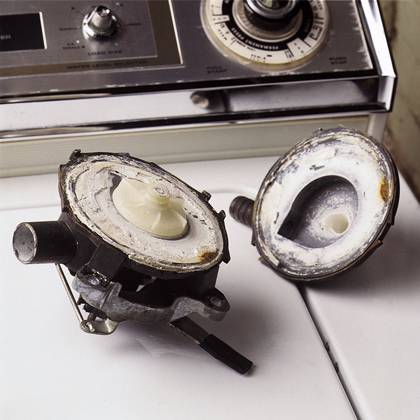
The presence of calcium and magnesium only become a problem when their levels rise to a point where build-up occurs inside pipes, on faucets, in showers, on glassware and dishes, and in or on other household appliances and surfaces.
Water hardness can be measured in several different units, but The Water Quality Association measures hardness in grains per gallon (gpg). Here are the following classifications:
- Less than 1 gpg = Soft
- 1 to 3.5 gpg = Slightly Hard
- 3.5 to 7 gpg = Moderately Hard<
- 7 to 10.5 gpg = Hard
- Above 10.5 gpg = Extremely Hard
How does a water softener work?
A water softener uses a physical and chemical process known as ion exchange to replace the calcium and magnesium ions with sodium ions. A water softener filters water through resin (also called zeolite), which is either a synthetic or a natural material resembling sand and is coated with positively charged sodium ions. Calcium and magnesium dissolve into the positively charged sodium ions, replacing them in the resin. The water that flows out of the softener contains the sodium ions and is considered soft.
Regeneration
Eventually, all of the sodium ions will become replaced by the calcium and magnesium ions. At this point, the resin exchange needs to become repopulated with sodium ions. To do this, the water softener goes through a process called regeneration where it is backwashed with a salt solution. When the brine is flushed back through the softening system, it removes the calcium and magnesium ions from the resin, returning it to use.
Kinetico Water Softener Solutions

Traditional electric water softeners have several pitfalls due to their design. Mainly, the cleaning mechanism has to be adjusted according to the type of water and the amount and time of water usage. This means that careful consideration had to be given to things like laundry, showers, doing the dishes, etc. Any unplanned and excessive uses of water could result in the use of unconditioned water. These systems didn’t plan for power failures and had components that malfunctioned easily in the damp, salty environments. Not to mention, electric shock was always a possibility.
Kinetico water conditioners are completely automatic systems. They remove all the pitfalls of the electric systems and even provides additional advantages.
- 50 – 75% less salt usage that electric softeners.
- Minimal water usage compared to electric softeners.
- No possibility of electric shock.
- Manual regeneration is not needed due to the automated system.
- Disconnection at vacation is not needed.
- Minimal maintenance is required (periodic check to see if salt level is okay).
- No clocks, electric valves, or electric sensors that can break.
- Regenerates only when needed.
- Unlimited amount of soft water.
- Affordable with low maintenance costs.
For more information, please visit our water softener solutions page.



